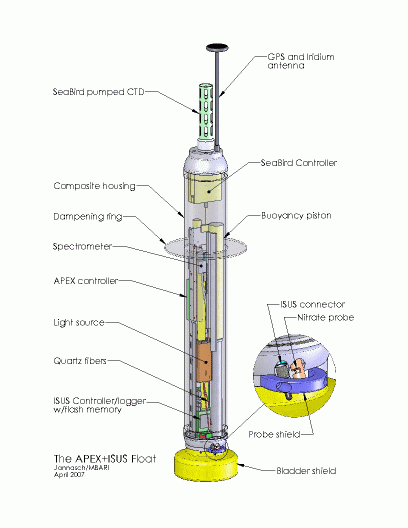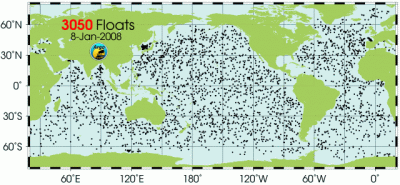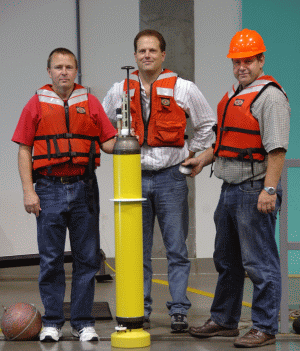Apex Profiling Float/ISUS Nitrate Sensor
A collaboration with Steve Riser's group at the University of Washington
Why measure nitrate? Nitrate is a key phytoplankton nutrient. The concentration of nitrate regulates phytoplankton growth in much of the ocean. In a warming climate, the transport of nitrate from deep water may diminish and reduce primary production in the ocean.
The ISUS nitrate sensor is integrated into the body of a Webb Research Apex profiling float that is of the type used in the Argo array. These floats are designed for an expendable deployment in the ocean.
- Floats park at 1000 m depth and profile to the surface at programmed intervals, typically 5 to 10 days. Measurements are made as the float rises. Results are transmitted to orbiting satellites and then to shore when the float reaches the surface. The float then returns to its parking depth.
- The Apex/ISUS float makes 60 measurements of nitrate and oxygen on each profile, and it measures temperature, salinity and pressure at 2 m intervals.
- Battery life is sufficient for approximately 260 vertical profiles from 1000 m depth.
- At a cycle time of 5 days, each float should profile for nearly four years.
- The precision of the ISUS nitrate sensor is near 0.2 micromoles per liter (1 SD).
- Absolute accuracy is about 0.5 micromoles per liter and can be improved by comparison to laboratory analyses to remove offsets.
- Data is available in real-time.
|
 |
 |
Integration of ISUS into the Webb Apex float was done by Dana Swift (UW), Luke Coletti and Hans Jannasch (MBARI).
|
 |
The Argo array consists of approximately 3000 profiling floats that are distributed throughout the world ocean. These floats are used to monitor the heat and salt budget of the ocean. Equipping such an array with biogeochemical sensors would allow scientists to monitor rates of primary production.
A plan to equip the Argo array with oxygen sensors now exists. |
Last updated:


